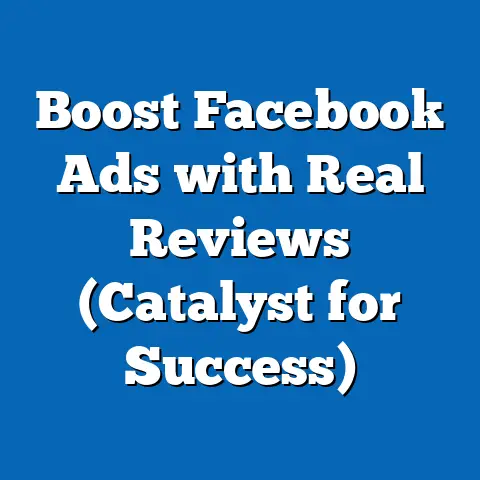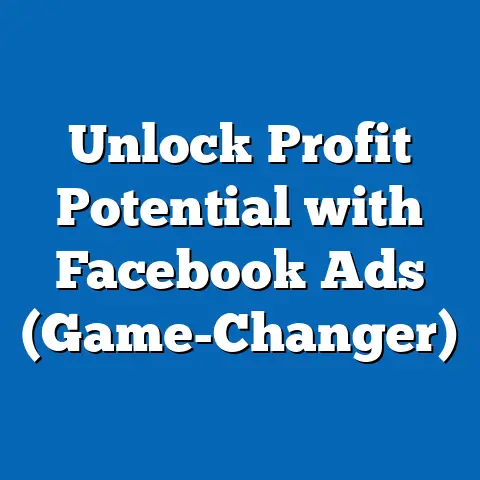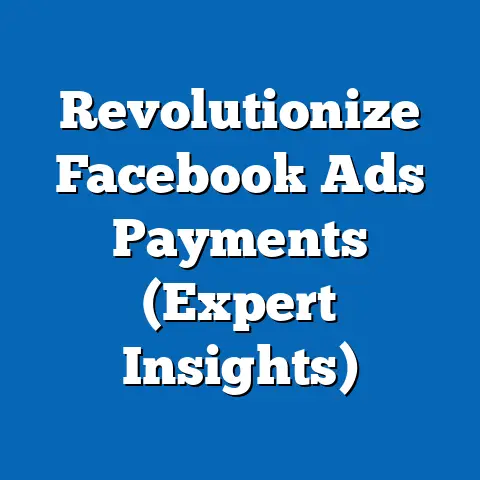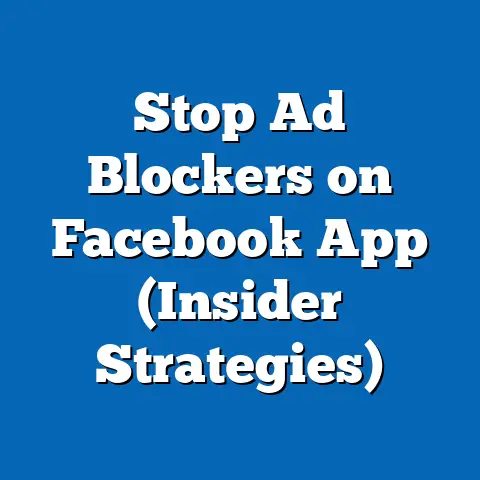Photos vs. Videos: Which Rules Facebook Ads? (Insightful Analysis)
Advertising has always been a mirror reflecting society’s ever-changing tastes and technologies. Think back to the late 19th century, a time of groundbreaking inventions. One of the most transformative was the moving image. Suddenly, static advertisements in newspapers and magazines were joined by the dynamic allure of film. This wasn’t just a new medium; it was a revolution. Film allowed advertisers to tell stories, evoke emotions, and capture attention in ways never before imagined. The rise of television further cemented the power of visual storytelling in the advertising world.
Fast forward to the 21st century, and we find ourselves in the age of social media. Platforms like Facebook have not only changed how we connect with each other but also how businesses connect with their customers. Traditional advertising models have been disrupted, giving way to new strategies that leverage the unique capabilities of these digital spaces. I remember when I first started running Facebook ads – the sheer volume of options and the speed at which things changed was overwhelming!
One of the most enduring debates in Facebook advertising revolves around a seemingly simple question: photos versus videos – which one reigns supreme? It’s a question I’ve grappled with countless times, experimenting with different approaches and analyzing the results. There’s no easy answer. Both photos and videos have their strengths and weaknesses, and their effectiveness often depends on a complex interplay of factors.
In this article, I’ll dive deep into this debate, providing an insightful analysis of the pros and cons of each medium. I’ll explore the power of visual content in general, examine the specific advantages and disadvantages of photos and videos, compare their performance across various metrics, consider audience preferences, and even speculate on future trends. My goal is to provide you with a comprehensive understanding of which visual format can help you achieve your advertising goals on Facebook. So, let’s jump in and uncover which truly rules the Facebook ads landscape.
The Rise of Visual Content in Advertising
Visual content isn’t just a nice-to-have in today’s marketing landscape; it’s an absolute necessity. In a world saturated with information, people are increasingly drawn to content that is engaging, easy to consume, and visually appealing. I’ve personally witnessed this shift firsthand. Early in my career, I focused primarily on text-based ads, but the results were often underwhelming. It wasn’t until I embraced visual content that I started seeing a significant improvement in engagement and conversions.
Why is visual content so effective? The answer lies in how our brains process information. Studies have shown that the human brain processes visual information 60,000 times faster than text. This means that a compelling image or video can capture someone’s attention almost instantly, while a wall of text might be quickly scrolled past.
Consider these statistics:
- Engagement: Facebook posts with images see 2.3X more engagement than those without.
- Retention: Viewers retain 95% of a message when they watch it in a video, compared to 10% when reading it in text.
- Conversion: Landing pages with videos can increase conversion rates by 80%.
These numbers speak for themselves. Visual content is a powerful tool for grabbing attention, conveying information, and driving action.
I’ve seen countless examples of successful advertising campaigns that leveraged the power of visual content. Take, for instance, Dove’s “Real Beauty” campaign. While it started as a print campaign, its impact was amplified through video. The videos featured real women, challenging conventional beauty standards and promoting self-acceptance. This campaign resonated deeply with audiences, generating millions of views and sparking a global conversation. The result? Increased brand awareness, positive brand sentiment, and a significant boost in sales.
On the other hand, consider GoPro. They built their entire brand on user-generated content, primarily photos and videos captured by their cameras. Their Facebook page is a constant stream of breathtaking visuals, showcasing the capabilities of their products and inspiring adventure. This strategy has not only created a loyal following but has also turned their customers into brand ambassadors.
Key Takeaway: Visual content is essential for capturing attention, increasing engagement, and driving conversions in today’s digital landscape. Brands that embrace visual storytelling are more likely to succeed in the crowded world of Facebook advertising.
The Power of Photos in Facebook Ads
While video is often touted as the king of content, photos still hold significant power in the realm of Facebook advertising. In fact, I often find myself going back to well-crafted photo ads, especially when I need to convey a simple message quickly and effectively.
One of the biggest advantages of photos is their simplicity. Creating a compelling photo ad doesn’t require a large budget or a team of videographers. With a good camera, some basic editing skills, and a creative eye, you can produce high-quality images that capture attention and convey your message. This makes photos a particularly attractive option for small businesses and startups with limited resources.
Another advantage is the speed of consumption. In today’s fast-paced world, people are constantly bombarded with information. They often don’t have the time or attention span to watch a long video. A photo, on the other hand, can be consumed in a matter of seconds. This makes it ideal for capturing attention in a crowded news feed and delivering a quick, impactful message.
Photos can also be incredibly effective at creating an emotional connection with your audience. A well-chosen image can evoke feelings of joy, sadness, excitement, or nostalgia, creating a powerful bond between your brand and your customers. I remember one campaign I ran for a local bakery. We used photos of their freshly baked goods, showcasing the warm colors and delicious textures. The response was overwhelming. People commented on how the photos made them feel hungry and nostalgic for their childhood.
Here are some types of photos that tend to perform well on Facebook:
- High-quality product shots: Showcasing your products in their best light can be incredibly effective at driving sales.
- User-generated content: Featuring photos taken by your customers can build trust and authenticity.
- Lifestyle shots: Showing your products in a real-world context can help people visualize how they would use them.
- Behind-the-scenes photos: Giving your audience a glimpse into your company culture can humanize your brand.
I’ve seen numerous brands successfully leverage photos in their Facebook campaigns. For example, fashion retailers often use visually stunning photos of models wearing their latest collections. These photos not only showcase the clothing but also create a sense of aspiration and desire. Similarly, travel companies use breathtaking photos of exotic destinations to inspire wanderlust and drive bookings.
However, photos also have their drawbacks. One of the biggest challenges is oversaturation. With so many photos vying for attention on Facebook, it can be difficult to stand out from the crowd. Another challenge is the lack of storytelling. While a photo can convey a message, it often lacks the depth and narrative power of a video.
Key Takeaway: Photos are a powerful and versatile tool for Facebook advertising. Their simplicity, speed of consumption, and ability to create emotional connections make them an attractive option for businesses of all sizes. However, it’s important to be mindful of the challenges of oversaturation and the limitations of storytelling when using photos in your campaigns.
The Dominance of Videos in Facebook Ads
There’s no denying that video content has taken the social media world by storm, and Facebook is no exception. I’ve watched the shift happen over the years. What started as a platform primarily for sharing photos and text updates has evolved into a video-centric hub, with billions of hours of video content being consumed every day.
This trend is driven by several factors. First, video is incredibly engaging. It combines visuals, audio, and motion to create a multi-sensory experience that captures attention and holds it for longer than static images. Second, video is highly shareable. People love to share videos with their friends and family, which can help your content reach a wider audience organically. Third, video is becoming increasingly accessible. With smartphones and affordable video editing software, anyone can create high-quality video content.
Consider these statistics:
- Daily Video Views: Facebook users watch over 100 million hours of video content every day.
- Engagement: Video posts on Facebook generate 59% more engagement than other post types.
- Conversion: Adding a video to your landing page can increase conversion rates by up to 80%.
These numbers clearly demonstrate the dominance of video in the Facebook ecosystem.
There are many different types of videos you can use in your Facebook ads, each with its own unique benefits:
- Short-form videos: These are typically under 60 seconds and are ideal for capturing attention quickly and conveying a simple message.
- Live videos: These are unscripted, real-time videos that allow you to connect with your audience in a more authentic way.
- Tutorials: These videos provide step-by-step instructions on how to use your products or services.
- Testimonials: These videos feature customers sharing their positive experiences with your brand.
I’ve seen countless examples of successful video campaigns on Facebook. One that always sticks out is Dollar Shave Club’s viral video ad. The video was funny, irreverent, and perfectly captured the brand’s personality. It generated millions of views and helped the company acquire a massive customer base.
Another example is Blendtec’s “Will It Blend?” series. These videos featured the company’s blenders destroying various objects, from iPhones to golf balls. The videos were entertaining, informative, and demonstrated the power of Blendtec’s products. This campaign helped the company build a strong brand identity and drive sales.
However, video also has its limitations. One of the biggest challenges is production costs. Creating high-quality video content can be expensive, requiring professional equipment, editing software, and skilled personnel. Another challenge is viewer retention. With so much video content available, it can be difficult to keep viewers engaged for the duration of your video.
Key Takeaway: Video is a dominant force in Facebook advertising. Its engaging nature, high shareability, and increasing accessibility make it a powerful tool for reaching and connecting with your audience. However, it’s important to be mindful of the challenges of production costs and viewer retention when using video in your campaigns.
Comparative Analysis: Photos vs. Videos
Now comes the critical question: which performs better, photos or videos? The truth is, there’s no one-size-fits-all answer. The effectiveness of each medium depends on a variety of factors, including your brand objectives, target audience, campaign context, and creative execution. However, by analyzing key performance indicators (KPIs) and comparing the strengths and weaknesses of each medium, we can gain valuable insights that can inform our advertising strategies.
Let’s start by looking at some key metrics:
- Click-Through Rate (CTR): This measures the percentage of people who see your ad and click on it. Videos often have a higher CTR than photos, as they are more engaging and capture attention more effectively. However, a well-crafted photo ad can also achieve a high CTR if it is visually appealing and relevant to the target audience.
- Engagement Rate: This measures the percentage of people who interact with your ad, such as liking, commenting, or sharing it. Videos tend to have a higher engagement rate than photos, as they provide more opportunities for interaction. However, photos can also generate high engagement if they are thought-provoking, humorous, or visually stunning.
- Conversion Rate: This measures the percentage of people who take a desired action after seeing your ad, such as making a purchase or signing up for a newsletter. The conversion rate can vary depending on the specific product or service being advertised, as well as the quality of the landing page. In some cases, videos can lead to higher conversion rates, as they provide more information and build trust. In other cases, photos can be more effective if they are clear, concise, and directly relevant to the desired action.
To illustrate this point, let’s consider a few scenarios:
- Scenario 1: Promoting a new product launch. In this case, a video might be more effective at showcasing the product’s features and benefits in a dynamic and engaging way. A video can also tell a story about the product, creating an emotional connection with the audience.
- Scenario 2: Driving traffic to a blog post. In this case, a photo might be more effective at capturing attention quickly and conveying the essence of the blog post. A photo can also be more visually appealing and encourage people to click through to read the full article.
- Scenario 3: Building brand awareness. In this case, both photos and videos can be effective, depending on the brand’s personality and target audience. A video can be used to tell the brand’s story and showcase its values. A photo can be used to create a visually appealing and memorable brand identity.
Here’s a table summarizing the key differences between photos and videos:
| Feature | Photos | Videos |
|---|---|---|
| Simplicity | Simple to create and edit | More complex to produce and edit |
| Consumption | Quickly consumed | Requires more time and attention |
| Engagement | Can be high with compelling visuals | Generally higher due to dynamic content |
| Cost | Lower production costs | Higher production costs |
| Storytelling | Limited storytelling potential | Greater storytelling potential |
| Feature | Photos | Videos |
|---|---|---|
| Simplicity | Simple to create and edit | More complex to produce and edit |
| Consumption | Quickly consumed | Requires more time and attention |
| Engagement | Can be high with compelling visuals | Generally higher due to dynamic content |
| Cost | Lower production costs | Higher production costs |
| Storytelling | Limited storytelling potential | Greater storytelling potential |
Key Takeaway: There’s no definitive winner in the photos vs. videos debate. The effectiveness of each medium depends on your specific goals, audience, and creative execution. It’s important to experiment with both photos and videos and track your results to see what works best for your brand.
Audience Preferences and Behavior
Understanding your audience is paramount to any successful marketing campaign, and Facebook advertising is no exception. I’ve learned over the years that what works for one audience segment may completely fall flat with another. Therefore, analyzing audience preferences regarding photos versus videos is crucial for optimizing your Facebook ad strategy.
Demographic factors such as age, gender, and interests can significantly influence how people respond to different advertising formats. For example, younger audiences tend to be more receptive to video content, particularly short-form videos that are easily consumed on mobile devices. On the other hand, older audiences may prefer photos, as they are less data-intensive and easier to view on smaller screens.
Gender can also play a role. Studies have shown that women are more likely to engage with emotional and visually appealing content, while men tend to be more interested in informative and action-oriented content. This suggests that photos might be more effective for targeting women, while videos might be more effective for targeting men.
Interests are another important factor to consider. People who are passionate about a particular topic are more likely to engage with content that is relevant to their interests. For example, someone who is interested in travel might be more receptive to photos and videos of exotic destinations.
To gain a deeper understanding of your audience’s preferences, you can conduct surveys, analyze social media data, and track the performance of your Facebook ads. I often use Facebook Audience Insights to get a better understanding of my target audience’s demographics, interests, and behaviors. This tool provides valuable data on the types of content that resonate with different audience segments, helping me tailor my advertising strategy accordingly.
The psychological aspects that influence viewer preferences are also worth exploring. Research has shown that people are more likely to pay attention to content that is visually appealing, emotionally engaging, and relevant to their needs and interests. This suggests that marketers should focus on creating high-quality photos and videos that capture attention, evoke emotions, and provide value to the audience.
Key Takeaway: Understanding your audience’s preferences and behaviors is crucial for optimizing your Facebook ad strategy. Consider demographic factors such as age, gender, and interests, as well as the psychological aspects that influence viewer preferences. Use data and analytics to track the performance of your ads and tailor your content accordingly.
Future Trends: The Evolving Landscape of Facebook Ads
The world of Facebook advertising is constantly evolving, driven by technological advancements, algorithm changes, and shifting user behavior. I’ve seen so many changes over the years, and it’s clear that staying ahead of the curve is essential for success. Looking ahead, several trends are likely to shape the future of visual advertising on Facebook, particularly concerning photos and videos.
One of the most exciting trends is the emergence of augmented reality (AR) and virtual reality (VR). These technologies have the potential to transform the way people interact with advertising, creating immersive and engaging experiences that go far beyond traditional photos and videos. Imagine being able to virtually try on clothes before buying them online or taking a virtual tour of a vacation destination before booking your trip. AR and VR could revolutionize the way brands connect with their customers and drive sales.
Another trend to watch is the increasing importance of personalization. As Facebook’s algorithm becomes more sophisticated, it will be able to deliver more relevant and personalized ads to each user. This means that marketers will need to create content that is tailored to the specific interests and needs of their target audience. Photos and videos that are highly personalized are more likely to capture attention and generate engagement.
Algorithm changes will also continue to play a significant role in the effectiveness of photos versus videos. Facebook is constantly tweaking its algorithm to prioritize content that is engaging, informative, and relevant to users. This means that marketers will need to stay up-to-date on the latest algorithm changes and adapt their content accordingly.
User behavior is another key factor to consider. As people spend more time on mobile devices, they are becoming increasingly accustomed to consuming short-form video content. This suggests that short, engaging videos will continue to be a dominant force in Facebook advertising. However, there will also be a growing demand for high-quality, immersive experiences that capture attention and provide value to the audience.
Key Takeaway: The future of Facebook advertising is likely to be shaped by emerging technologies like AR and VR, the increasing importance of personalization, algorithm changes, and shifting user behavior. Marketers will need to stay ahead of the curve and adapt their content accordingly to remain competitive.
Conclusion
The debate between photos and videos in Facebook advertising is far from settled. As I’ve explored throughout this article, both mediums offer unique advantages and disadvantages, and their effectiveness often depends on a complex interplay of factors.
Photos excel at simplicity, speed of consumption, and creating emotional connections. They are a cost-effective option for businesses of all sizes and can be particularly effective at capturing attention quickly and conveying a simple message.
Videos, on the other hand, dominate in engagement, storytelling, and shareability. They are a powerful tool for reaching and connecting with your audience, building brand awareness, and driving conversions.
Ultimately, the choice between photos and videos depends on your specific brand objectives, target audience, campaign context, and creative execution. There is no one-size-fits-all answer. The key is to experiment with both mediums, track your results, and tailor your strategy accordingly.
As we look to the future, the landscape of visual advertising on social media is likely to continue to evolve. Emerging technologies like AR and VR, the increasing importance of personalization, algorithm changes, and shifting user behavior will all shape the way brands connect with their customers.
In this dynamic and ever-changing environment, it’s essential to stay informed, adapt your strategies, and embrace innovation. By understanding the strengths and weaknesses of photos and videos, analyzing audience preferences, and staying ahead of the curve, you can maximize the effectiveness of your Facebook advertising campaigns and achieve your business goals. So, I encourage you to continue experimenting, learning, and adapting your approach to visual advertising on Facebook. The future of your campaigns depends on it!






